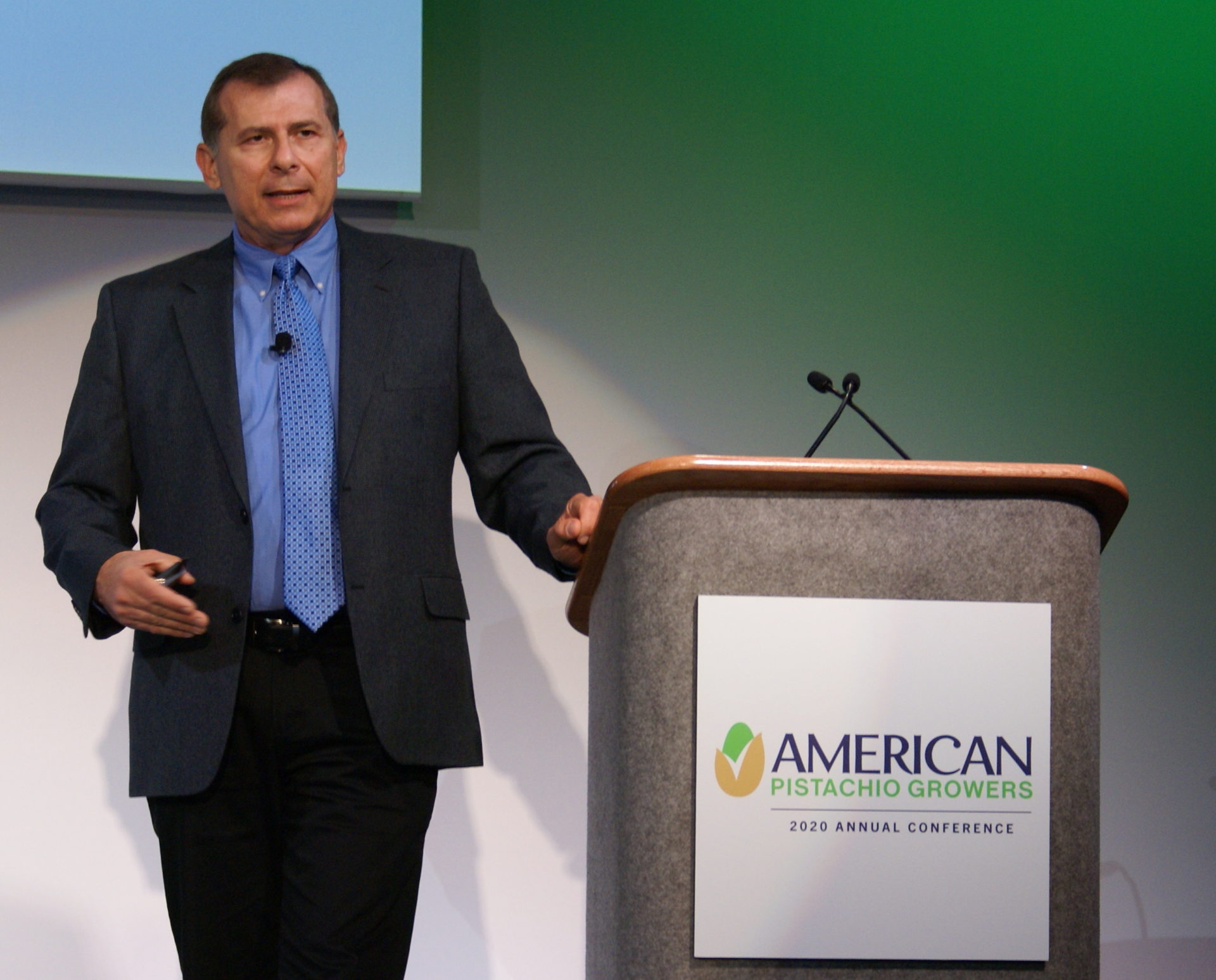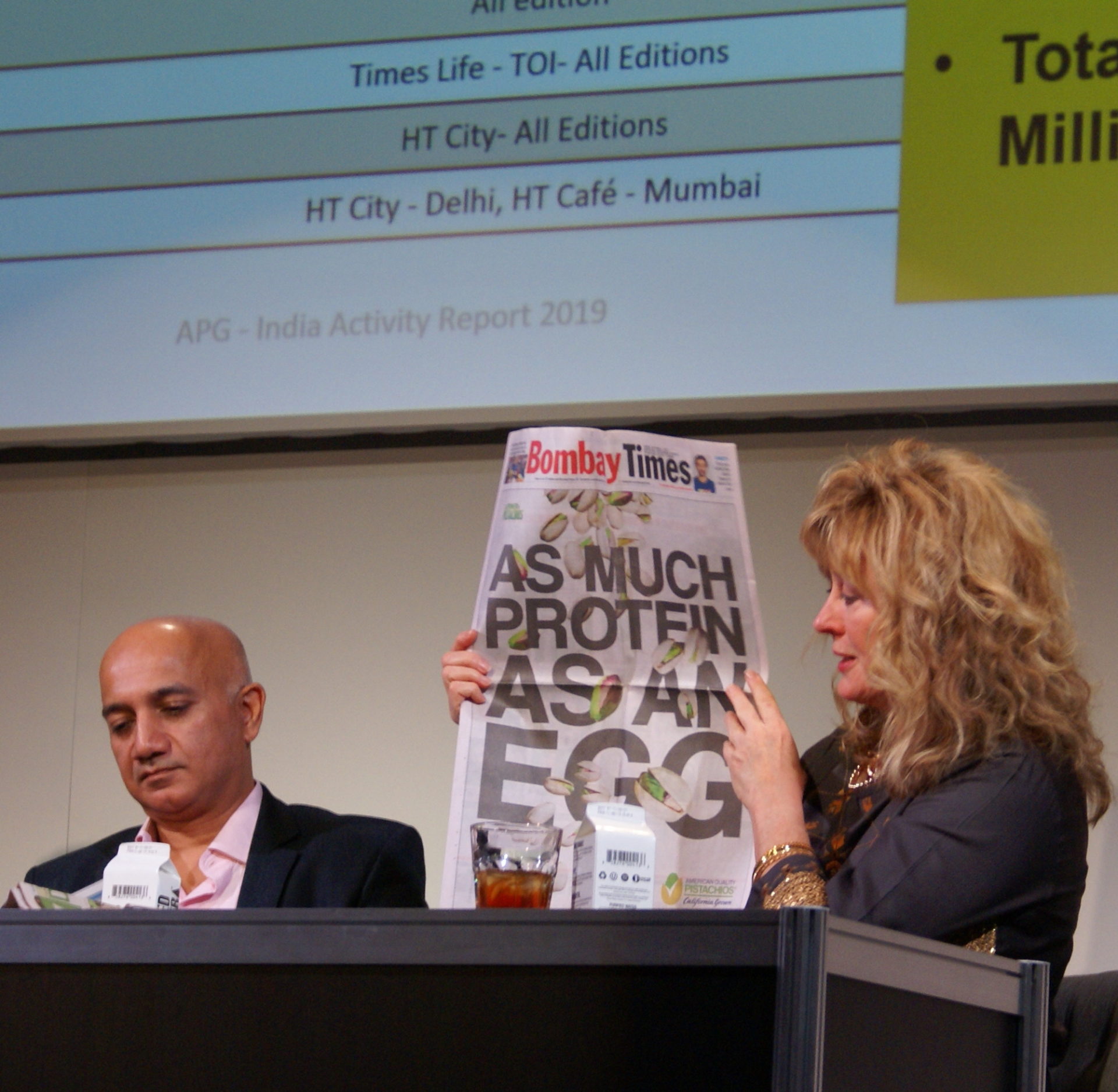
The American Pistachio Growers is working to expand international markets to keep pace with record crops on the horizon as nonbearing acreage comes into production in the next few years. A panel of experts at the American Pistachio Growers Annual Conference in Monterey, Calif., said there is tremendous untapped potential in India for California pistachios among a consuming public that is culturally adapted to snacking on nuts, appreciates and pays for premium quality, identifies with the California brand, and is growing in economic buying power.
More than 65 percent of California pistachio production goes to export markets, with Europe and China leading consumption. Still, APG Executive Director Richard Matoian said there is tremendous room for growth.
Pistachios are now the fifth largest commodity in California, and number three in exports behind dairy and almond. Exports of California pistachios more than doubled in 2018-19.
“The domestic market continues to be a very stable market,” Matoian said. “In the last three years we have exported record shipments overseas, and especially in the last year.”

He told the 1,200 conference growers that APG will continue to fund and publicize nutrition research globally to discover, validate and publicize the health benefits of pistachios. Keynote speaker Dr. Oz said there is no reason Americans shouldn’t be making nuts a regular part of a daily diet given the health benefits of pistachios and other nuts.
“Consumption of nuts in this country is 1/28th what it is in other countries, we have a ways to go,” Oz said. He noted that pistachios fit into his worldview of preventive heart health and believes they also help with sleep and weight loss. The more consumers know about those benefits, the more inclined they will be to eat nuts.
“It’s part of your responsibility as growers to wake us up and get the American consumer to eat more nuts,” he said. “You guys should partner with all the other nut guys and figure out why we are not eating more nuts in America.”
Developing Markets in India
Tapping into new and emerging markets will be especially important as processors look to continue handling record crops. Bearing acreage continues to grow, to about 300,000 bearing acres and the country’s 800 growers expect to produce their first ever billion-pound crop in 2020. Even the off-year of 2019 produced 748 million pounds, which was the third largest crop in history despite being on an off-year cycle. According to a recent study, that production could reach 1.4 billion pounds by 2026 as growers continue to plant an average of 15,000 acres of pistachios annually and young acreage every year comes into production.
Developing new and diverse export markets will be key to moving that new production, Matoian said.
“We see India as the new frontier,” Matoian said. “In the last year we have tripled our shipments to India from 6 million pounds to 18 million pounds.”
Judy Hirigoyen, vice president of global marketing for APG, led a panel of nut suppliers and marketers in India who said there is tremendous potential in India. Only 1 to 2 percent of the population currently eats pistachios on a regular basis, so there is unlimited opportunity for growth, the panelists said.

Gunjan Jain of VKC nuts, a fourth-generation nut and dried fruit processing company in India, said India used to consume only almonds, walnuts and raisins but is broadening its tastes to pistachios and other nuts and dried fruits. And as other California nut crops made their way into India in the 1990s consumers there have developed a taste for quality and recognition of the California brand. He noted that India is a diverse country with a growing middle class. Even with 120 percent tariffs, he noted, California walnut consumption has exploded in India as Indian consumers develop a taste for nuts. Pistachios tariffs are currently at 10 percent.
“When you start looking at what India has, that’s when the opportunities start to be more clear,” Jain said. “The market is bound to increase. And the good news for you is that California as a brand already exists.”
Ritesh Bajaj of KBB Nuts, a foodservice supplier in India, noted that the average age in India is 38, with young decision makers who value health and are into cuisine.
“Today in India, being in the food business is the best business in India because food consumption is going up,” Bajaj said.
He noted that about a third of the country is vegetarian, and plant-based proteins are in high demand. Consumers there have grown accustomed to consistent, high quality, and processors must be vigilant about color, safety and other quality attributes, he added.
“Indian consumers buy with their eyes.”
Hirigoyen noted that APG is working with top quality processors to export for its India sales and marketing promotions using the trademarked California Pistachio brand.
“We don’t want to get off to a bad start in India,” she said.












